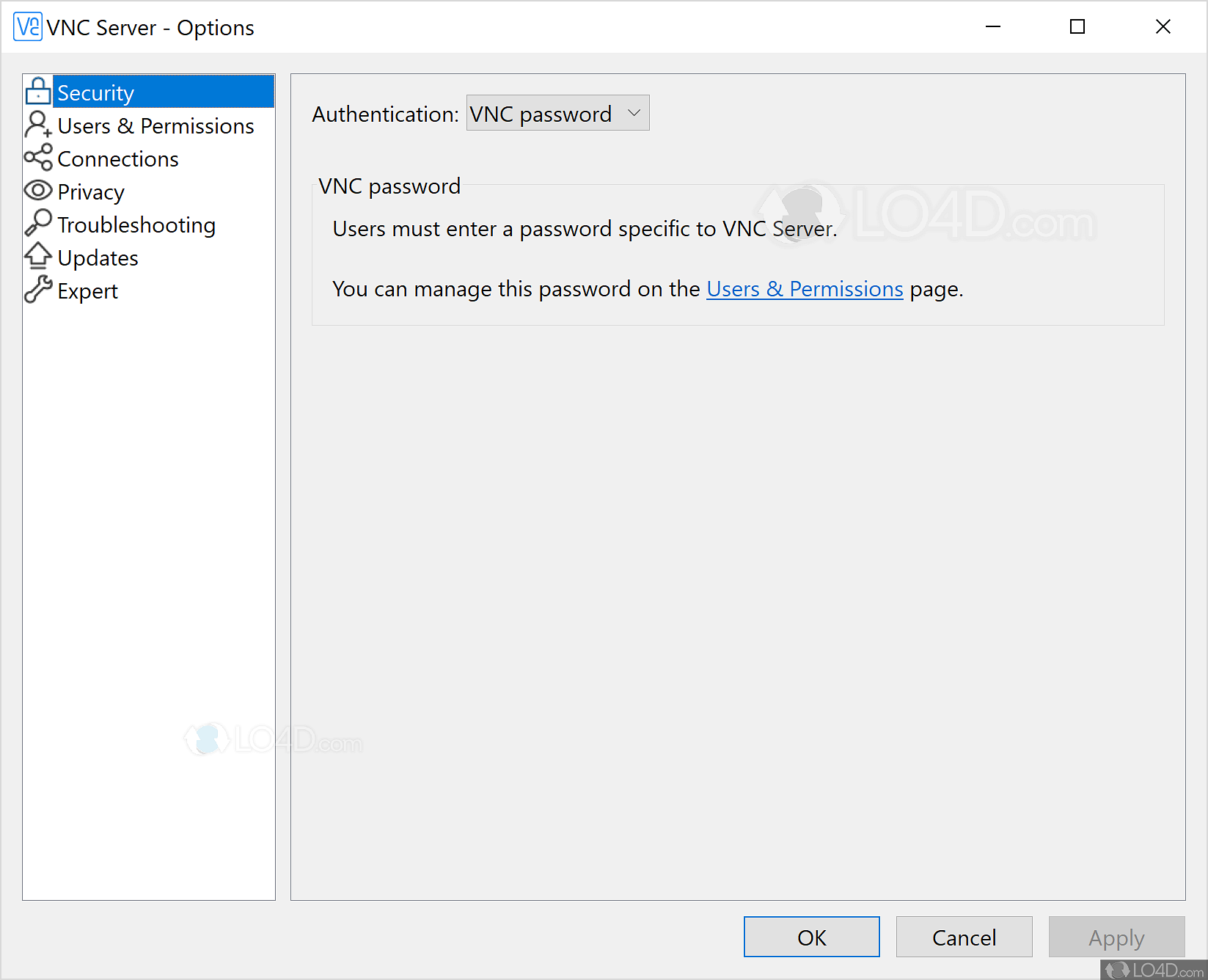

- Vnc connect sign out software#
- Vnc connect sign out code#
- Vnc connect sign out Pc#
- Vnc connect sign out series#
This frees up resources for the other programs that I’m running. For servers, I usually like to leave the desktop disabled, and set the computer to boot to the command line (CLI). You can’t remote in to the desktop if it’s not running. If, for some reason, you don’t like RealVNC, or don’t want to use the latest version of Raspbian, you can still go back and read my instructions for installing X11VNC in the previous version of this post. Since the introduction of the Pixel desktop, Raspbian images have had a RealVNC server built right in. Sometimes, though, you just want to see a desktop, and that’s not easy when the computer you’re trying to see has no monitor, keyboard, or mouse.Īdding remote desktop abilities to the Raspberry Pi is now trivially easy. So far in this series, we’ve set up the Raspberry Pi for remote login via SSH. Reading the instructions is one thing, but watching it done demystifies the whole process. If you have a Pluralsight subscription, please consider watching it.
Vnc connect sign out series#
Self-Promotion: I have recorded this series as a screencast for Pluralsight: Please refer to the series Introduction for a list of all the different posts in the series. If you’ve started from something other than a non-NOOBS Raspbian image, then you’ll probably need to adjust for that. If you are just trying to add one thing to an existing system that was not built following this series, then I cannot promise that these instructions will work for you, although they probably will.
Vnc connect sign out software#
If you provide computer support, you can quickly access your customer's computers from anywhere in the world and resolve helpdesk issues remotely! With addons like Single Click (SC) your customers don't even have to pre-install software or execute complex procedures to get remote helpdesk support.Note: This post is part of a series. PcHelpWare and uvnc2me are not RFB compatible. This common start point means that most of the VNC flavours available today "usually" talk nicely together, allowing for easy cross platform desktop sharing to occur. CompatibilityĪll VNC flavors follow the RFB protocol. PcHelpWare and uvnc2me require XP or later.

Its embedded Java Viewer allows you to connect (and make File transfers) from a simple Web Browser on any system supporting Java (Linux, Mac OS.) to an UltraVNC server.

Windows XP, 2003, Windows Server 2003, Vista, Server 2003 R2, Server 2008: latest version: (9) PcHelpWare has a preconnect screen that allow to select a RDP or the console session. (8) Runing as service you always clone the console, if started as application you clone the current session (console/RDP).
Vnc connect sign out code#
(7) The password is generated for each session, access code is fixed. (6) Using the encryption plugin you can use a longer password or a predefined key. Both sites make an outgoing connection to the repeater and the repeater cross the data. (5) A seperate application "repeater" is needed. (4) The site behind the nat router need to initiate the connection. (2) One site is connected to the internet the other is behind a nat router. PcHelpWare or uvnc2me can be bundled without restriction. If you want to use UltraVNC or UltraVNC SC in combination with a commercial software you need to create a seperate installer or let your installer download UltraVNC. (1) GPL doesn't allow bunding of GPL and non GPL software.

A VNC server must be run on the computer sharing the desktop, a VNC client must be run on the computer that will access the shared desktop. VNC, the Remote Frame Buffer protocol (RFB) allows a desktop to be viewed and controlled remotely over the Internet. It means that you can work on a remote computer, as if you were sitting in front of it, right from your current location.
Vnc connect sign out Pc#
The program allows you to use your mouse and keyboard to control the other PC remotely. UltraVNC is a powerful, easy to use and free - remote pc access softwares - that can display the screen of another computer (via internet or network) on your own screen.


 0 kommentar(er)
0 kommentar(er)
